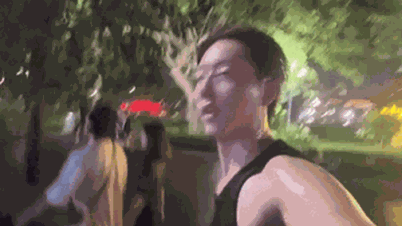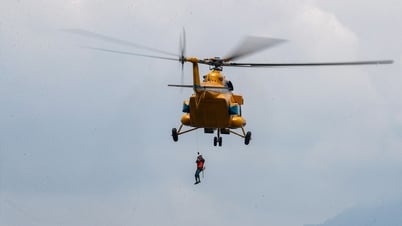People newspaper on September 17 published information about the discovery of a rare animal species after more than 50 years of "disappearance".
Accordingly, during an expedition with the World Wildlife Fund (WWF) in the Nakanai Mountains (Papua New Guinea) in March 2024, photographer Tom Vierus (Fiji) accidentally captured the image of a New Britain hawk - a bird of prey on the list of endangered species in Papua New Guinea.

A New Britain hawk in Pomio, East New Britain (Papua New Guinea). Photo: Tom Vierus/WWF-PACIFIC/AFP
This is the first time in more than 50 years that the bird's appearance has been recorded.
The New Britain hawk is found only on the island of New Britain in Papua New Guinea. Its feathers are grey with white underparts and orange accents on its neck.
The New Britain hawk is distinguished by its large feet, with the middle toe longer than the rest. The feet of the New Britain hawk are pale yellow. Adults are only about 27–34 cm long.
The New Britain hawk lives in tropical to subtropical moist montane forests. It reaches elevations of 1,200 to 1,800 m. Like other birds, the New Britain hawk nests where it raises its young. Little is known about the species because it is rare and the areas it inhabits have not been thoroughly studied.
The International Union for Conservation of Nature (IUCN) estimates that there are between 2,500 and 10,000 adult New Britain hawks in the wild, but the bird's elusive nature makes it difficult for scientists to confirm specific information.
In fact, the New Britain hawk is so unusual that Fiji-based photographer Tom Vierus didn't even realize he had photographed the bird at first.
In a WWF statement, he said he was surprised to learn that this appeared to be the first photo of the long-lost species.
"It's amazing that this photo is the first image of this bird that was thought to be extinct! It shows that conservation photography can contribute to protecting areas by documenting the biodiversity that exists," said the photographer.
According to Mr. John Mittermeier, director of the Missing Birds Search Agency, of the Bird Conservancy (USA), the recent scientific document about this species seems to be a sample collected in 1969, currently kept in an American museum.
Although there have been occasional reports of the bird's existence, the New Britain hawk has not appeared in photographic, audio, or specimen records for the past 55 years.
WWF stressed that the discovery of the New Britain hawk shows the importance of protecting the area from threats such as logging and mining.
Following the shocking discovery, local authorities have asked WWF to expand its wildlife conservation efforts in Pomio, East New Britain. WWF-Papua New Guinea Pomio Landscape Manager Martha Eimba said WWF “has begun a collaborative process to understand the threats, livelihood opportunities and social context” to protect Papua New Guinea’s rare species and create an effective conservation program.
This is not the first time an animal has been rediscovered in Papua New Guinea - home to the "third largest intact rainforest in the world ".
In 2022, a rare pigeon was photographed, marking the first time the bird had been recorded in 140 years. Mittermeier said that capturing the image of the black-naped pigeon was "a dream moment for any conservationist and birdwatcher".
Minh Hoa (t/h)
Source: https://giadinh.suckhoedoisong.vn/loai-vat-quy-hiem-bac-nhat-hanh-tinh-bien-mat-hon-50-nam-bat-ngo-tai-xuat-17224092407183189.htm
























![[Infographic] Vietnam-Senegal traditional friendship](https://vphoto.vietnam.vn/thumb/1200x675/vietnam/resource/IMAGE/2025/7/23/4c96a604979345adb452af1d439d457b)













































































Comment (0)